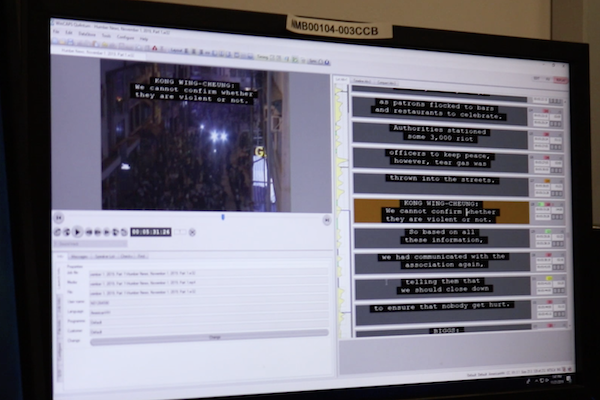Accessible Media at FMCAD
As part of the Faculty of Media, Creative Arts, and Design commitment to creating an inclusive learning environment, the Accessible Media Department offers transcription, captioning and described video services to all FMCAD staff and faculty members.
Why Accessible Media?
As per the Accessibility for Ontarians with Disabilities Act (AODA), starting on January 1, 2021, all private and public organizations (including educational institutions) with more than 50 employees are required to meet the WCAG 2.0 AA standards. Among these standards are the requirement for captions on all pre-recorded video. The FMCAD's goal is to consistently meet and, where possible, exceed established standards of media accessibility.
Transcripts
Transcripts are text versions of speech and non-speech elements contained in audio information. Closed captions present spoken language and other relevant audio information in a video as synchronized text on screen. Each is an essential tool for students who are deaf, hard-of-hearing, new English speakers, or have diverse learning abilities.
Described Video
Described video (DV) narrates visual elements on the screen such as charts and graphs, settings and surroundings, and people's appearances and emotional reactions for people with low or no vision, or people who favour aural learning.
The services of the Accessible Media Department are available to all faculty and staff of the Faculty of Media, Creative Arts, and Design. Faculty and staff of other Humber faculties can access our services, billed through an interdepartmental FOAP. Email captions@humber.ca with inquiries.
Humber students are expected to provide captions and described video for their own projects.
The Accessible Media Resource List is provided for faculty, staff and students to help everyone make their electronic communications more accessible.

